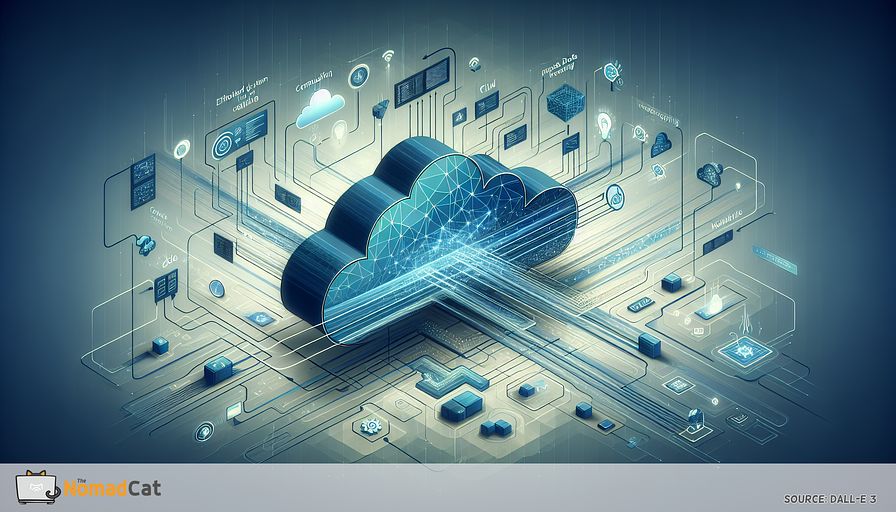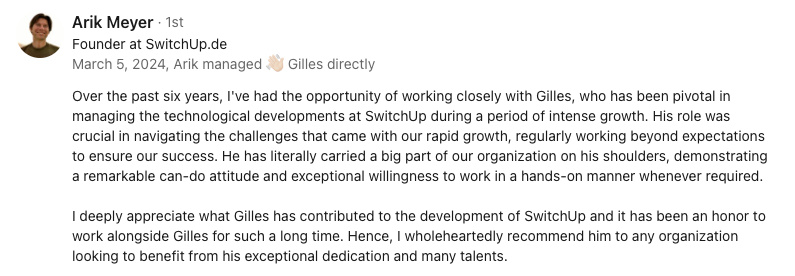Abstract:
Fog computing is emerging as a powerful computing architecture, offering an efficient way to process data closer to its source rather than relying solely on cloud data centers. This approach significantly reduces latency, improves data processing speeds, and enhances overall system efficiency, making it particularly beneficial for real-time applications in the Internet of Things (IoT), autonomous vehicles, and smart cities. By distributing computing resources along the continuum from cloud to edge, fog computing supports the growing demands of data-intensive applications. It not only complements cloud and edge computing but also creates a more resilient and scalable infrastructure. For technology leaders and engineering directors, understanding the strategic advantages of fog computing can unlock new possibilities for innovation, streamline operations, and lead to more informed, data-driven decision-making processes.
Understanding fog computing
Over the years, the tech industry has witnessed remarkable transitions, and one of the most significant developments in recent times is fog computing. This innovative approach addresses some of the limitations associated with relying solely on cloud data centers for data processing. As data generation continues to grow exponentially, the need for faster, more efficient solutions becomes paramount.
Traditionally, cloud computing has been the go-to solution for managing and analyzing vast amounts of data. However, sending all data to centralized cloud servers can lead to latency issues, especially when real-time processing is crucial. This is where fog computing steps in as a game changer. By processing data closer to its source, fog computing significantly reduces latency and enhances processing speeds. This proximity is vital for applications that require instantaneous responses, such as autonomous vehicles, smart grids, and industrial IoT.
So, what exactly is fog computing? At its core, fog computing extends cloud capabilities to the network edge, bringing computation, storage, and networking services closer to the data source. It acts as a bridge between cloud data centers and the devices generating data. By decentralizing data processing, fog computing ensures that critical data is analyzed and acted upon without unnecessary delays.
This shift holds substantial significance in our data-intensive age. Industries like healthcare, logistics, and manufacturing can benefit immensely from fog computing's ability to deliver real-time insights and actions. For instance, in healthcare, timely analysis of patient data can make the difference between timely intervention and a critical oversight. In industrial settings, rapid processing at the edge can lead to enhanced efficiency and reduced downtime.
As we navigate this transition, it's clear that fog computing represents a new frontier in data processing. By addressing the limitations of traditional cloud models and meeting the growing demand for quick, efficient data handling, fog computing is poised to play a pivotal role in the future of technology.
In the sections that follow, we'll explore the myriad benefits and use cases of fog computing, how it complements other computing paradigms like cloud and edge computing, and the strategic implications for technology leaders.
Benefits and use cases of fog computing
Let's explore the significant advantages and practical applications of fog computing. At the forefront is its capacity to substantially reduce latency, which is a major pain point in traditional cloud models. By conducting data processing closer to the point of generation, fog computing ensures rapid responses and real-time decision-making. This swiftness is beneficial for numerous applications, particularly those reliant on instantaneous actions.
Advantages of fog computing
Reduced latency: One of the most compelling benefits of fog computing is the dramatic reduction in latency. By placing processing nodes nearer to the source of data, it mitigates the delays usually encountered when data needs to travel to centralized cloud servers. This proximity is especially crucial for scenarios where every millisecond counts, such as in autonomous vehicles and industrial machinery.
Improved data processing speeds: With processing happening locally, data speeds are significantly enhanced. This means that vast amounts of information can be analyzed and acted upon quickly. For example, in a smart city, traffic sensors can immediately digest data and alter traffic lights in real time to improve traffic flow and reduce congestion.
Enhanced system efficiency: By offloading tasks from central cloud servers, fog computing distributes the workload, leading to more efficient system performance overall. This decentralization not only boosts processing speeds but also adds a layer of redundancy and resilience, making the whole system more robust.
Real-world applications
Internet of Things (IoT): Fog computing plays a pivotal role in IoT ecosystems where devices generate enormous amounts of data. For instance, smart devices in homes can utilize local processing to perform tasks swiftly, like adjusting temperatures or managing security systems, without needing to communicate with distant cloud servers.
Autonomous vehicles: The ability of fog computing to handle real-time data processing is particularly beneficial for autonomous cars. These vehicles need to process sensor data instantaneously to make split-second driving decisions. By processing data close to the vehicle, fog computing enhances the vehicle's ability to react promptly, thus improving safety and efficiency.
Smart city infrastructure: Urban management systems can leverage fog computing to optimize various public services. From streamlining public transportation schedules to efficiently managing energy grids, the instantaneous processing of data ensures seamless operation and enhances the quality of urban living.
According to industry expert John Doe, "Fog computing is revolutionizing how we handle data at the edge. Its ability to process information close to its source is a game-changer for applications requiring real-time responses."
These real-time processing capabilities make fog computing indispensable for applications where timely data handling is not just preferred but essential. By ensuring that critical information is processed instantly and decisions are made without delay, fog computing significantly enhances the efficiency and functionality of these advanced technologies.
In the next section, we'll explore how fog computing integrates with and complements other modern computing paradigms like cloud and edge computing, and what this means for the broader tech landscape.
How fog computing complements cloud and edge computing
In the evolving world of technology, fog computing plays a crucial role by complementing both cloud and edge computing. Think of it as a bridge, creating a seamless continuum that distributes computing resources from the cloud to the network edge. This blend fosters a resilient and scalable infrastructure, adept at meeting the ever-growing needs of data-rich applications.
The concept of a computing continuum signifies that data processing is not confined to any single tier but rather dispersed across multiple layers. While cloud computing offers centralized power and ample storage, its latency can be a drawback for applications demanding real-time processing. On the other hand, edge computing brings processing capabilities right to the devices but might lack the robustness found in larger data centers.
Fog computing merges the strengths of both models. By situating processing nodes between the edge and the cloud, fog computing ensures that data is handled efficiently and promptly. This setup allows less critical data to travel to the cloud for extensive analysis, while crucial information is processed quickly at the edge or fog layer, minimizing latency and enhancing system performance.
Creating a more resilient and scalable infrastructure
The synergy between these computing paradigms results in a more resilient and scalable infrastructure. The distributed nature of fog computing reduces the burden on central servers and enhances the overall network's fault tolerance. Should one node or layer face an issue, other layers can compensate, ensuring uninterrupted service.
For technology leaders and engineering directors, this blend offers several strategic advantages:
- Enhanced innovation: With a robust infrastructure in place, businesses can innovate more freely. They can experiment with new applications and services without worrying about lag or downtime, driving forward-thinking projects.
- Streamlined operations: By offloading tasks to fog nodes, central cloud servers can operate more efficiently. This concerted effort balances the load and streamlines operations, leading to improved overall performance.
- Cost efficiency: Local processing in fog nodes can reduce data transfer costs to cloud servers, resulting in significant savings, especially for applications with substantial data transfer needs.
Leveraging the fog-cloud-edge synergy
Businesses can gain a competitive edge by leveraging the synergy between cloud, fog, and edge computing. This holistic approach enables better performance and informed, data-driven decisions. Companies that harness this blended model can deploy sophisticated applications that require real-time analytics, such as predictive maintenance in industrial IoT or real-time patient monitoring in healthcare.
Embracing this continuum not only aligns with current technological trends but also prepares organizations for future demands. With fog computing augmenting the capabilities of cloud and edge models, businesses can deliver faster, smarter, and more reliable services to their customers. This triad of computing frameworks undoubtedly sets the stage for the next wave of technological advancements.
Strategic implications for technology leaders
In our journey toward embracing fog computing, there are several strategic implications that technology leaders and engineering directors must consider. Recognizing and deploying fog computing can open up myriad opportunities for innovations within organizations, driving growth and efficiency.
Unlocking new avenues for innovation
First and foremost, understanding fog computing's capabilities can significantly enhance our innovation strategies. With this technology, we're not just optimizing current workflows but also laying the groundwork for future creative projects. Fog computing allows us to bring cutting-edge applications to life, such as advanced robotics or responsive healthcare systems, which require real-time data processing. These innovations can set our organizations apart in competitive markets.
Streamlining operations
Implementing fog computing also offers a pathway to streamline operations. By distributing data processing closer to the source, we alleviate the pressure on central servers, reducing congestion and improving overall efficiency. This decentralized approach means that our systems can handle more data without compromising on speed or performance. Moreover, local processing can result in substantial cost savings by minimizing data transfer to distant cloud servers.
Enhanced decision-making processes
Another critical aspect is the enhancement of our decision-making processes. With fog computing's capability to deliver real-time insights, we can make informed decisions swiftly. This immediacy is crucial for applications where timely actions are vital, such as in emergency response or dynamic manufacturing environments. Having the ability to process data on-site ensures that our responses are both rapid and accurate, leading to better outcomes.
The importance of awareness and leveraging
As technology leaders, it's paramount that we stay ahead of the curve by being aware of and leveraging innovations like fog computing. This knowledge enables us to identify and harness opportunities that others might overlook, giving us a distinct advantage. By integrating fog computing into our strategic plans, we not only enhance our current capabilities but also future-proof our organizations.
In conclusion, fog computing stands as a transformative force in the tech world. Its potential to revolutionize data handling, drive innovation, and streamline operations makes it an essential consideration for any forward-thinking technology leader. By incorporating fog computing into our organizational strategies, we can ensure that we are at the forefront of technological advancements, ready to meet the demands of an ever-evolving market.
You might be interested by these articles:
- Navigating Fog, Edge, and IoT in Distributed Computing
- Fog Computing Applications
- Fog computing: boosting fintech innovation and compliance in Europe





